About Article
Let's think about Asian Dumpling cultures on this article. We'd like to introduce you to jiǎo zi(Boiled Dumpling), Gyōza(Grilled Dumpling), Mandu, dimsum, Ha Cao in Vietnam, Samosa dumpling and so on.
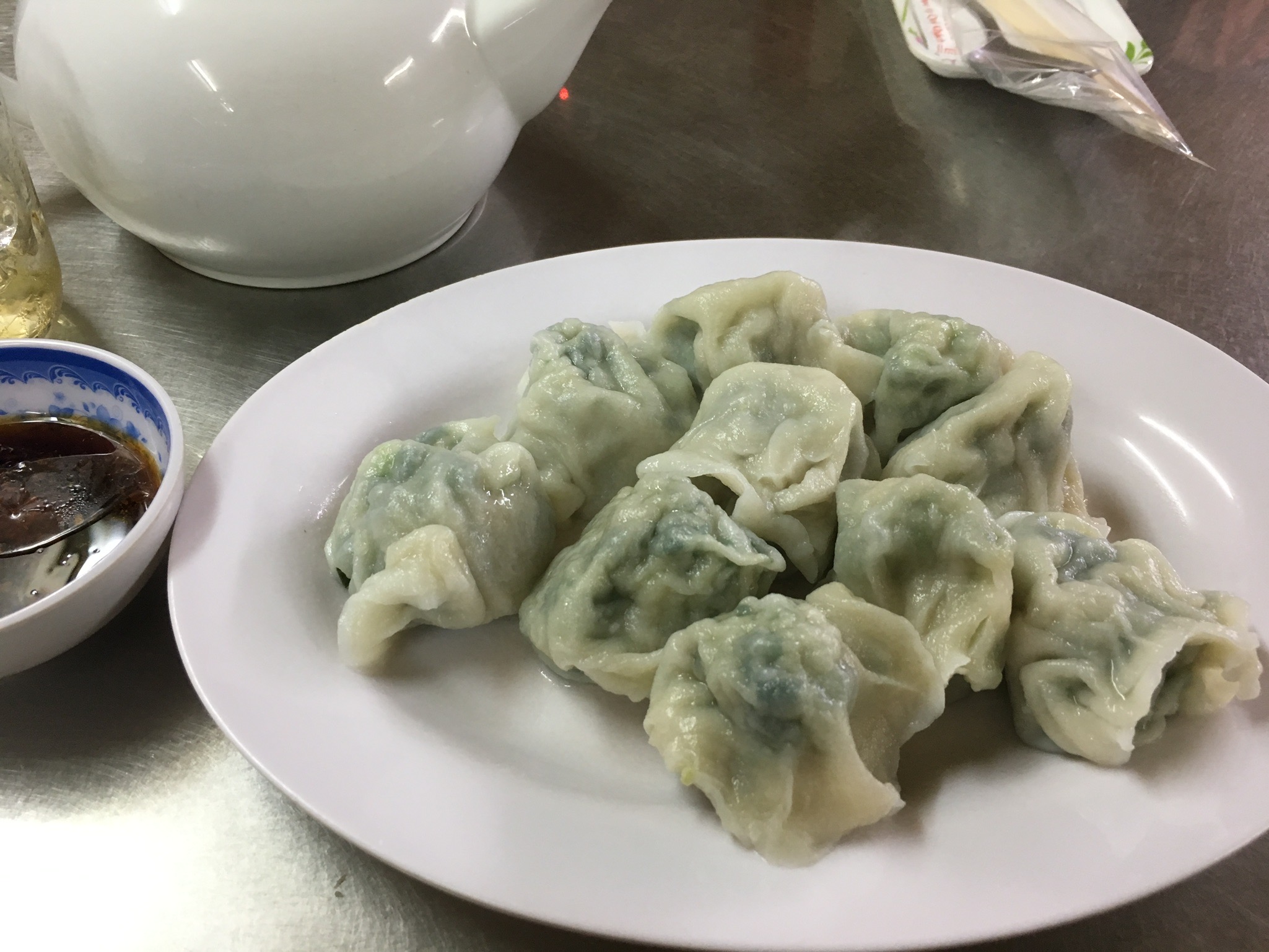
Jiǎo zi(餃子), China 
Let's think about Asian Dumpling cultures.
Dumplings are called jiǎo zi in Chinese.
For making dumpling dough, we add boiled water to flour and mix well until the flour absorbs all water.
After that, you coat every side of dough with starch,
wrap pork and vegetables around the dough, and then add them to boiled water.
Jiǎo zi is written (餃子) in Chinese characters. On the other hand,
"Gyōza" means "dumpling" in Japanese. Japanese also uses the same characters as the Chinese ones
even though the way of pronuncing it is different from the original Chinese way.
Since all Japanese people who don't understand Mandarin can communicate with Chinese by their characters,
they catch the basic meaning of cuisine on the menu when they order something from the waiter at the restaurant.
But they are surprised at the dumplings which the waiter serves them because these aren't grilled dumplings!
Basically, Chinese jiǎo zi indicate boiled dumplings like above.
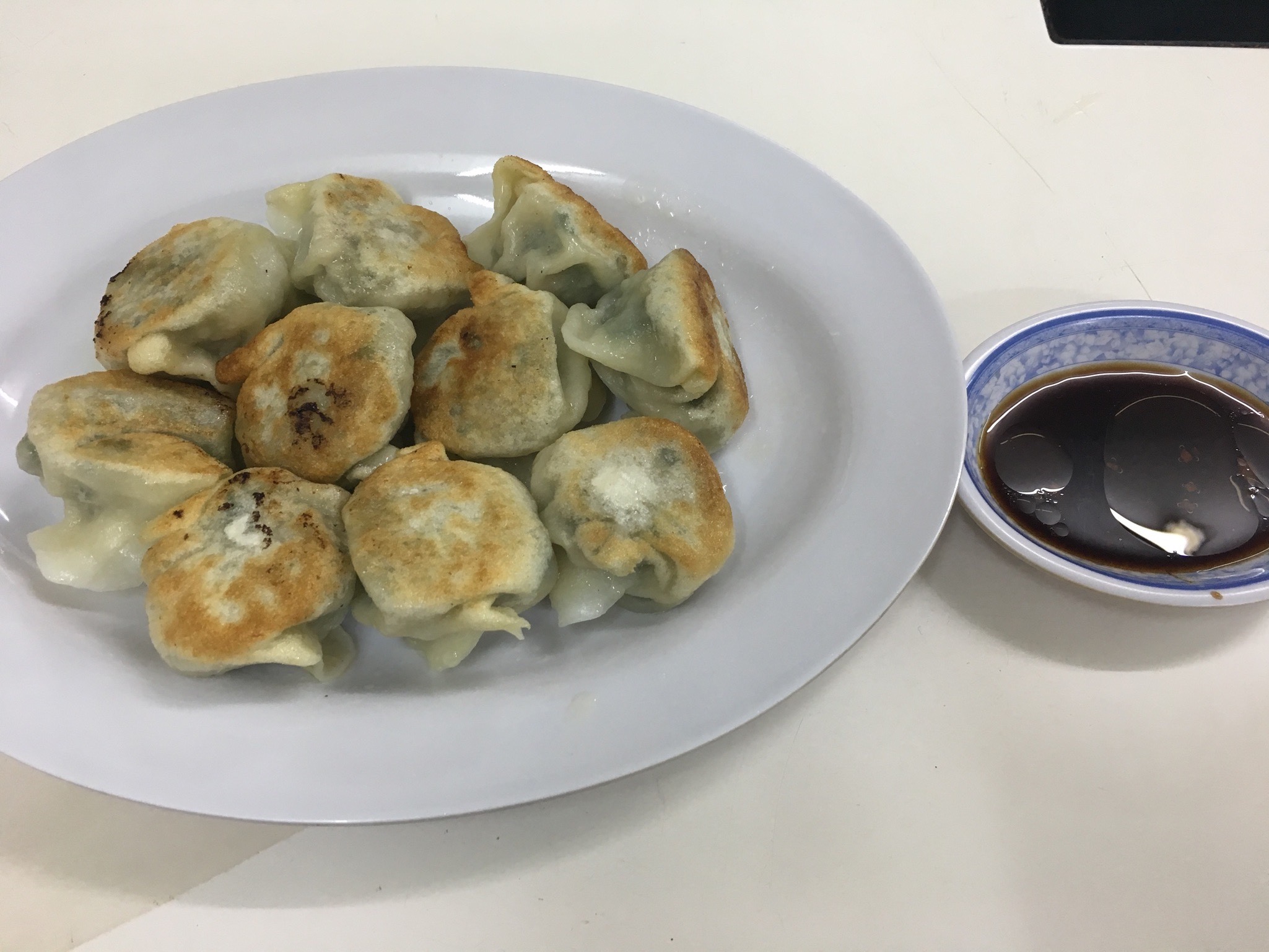
鍋貼(guō tiē) Grilled Dumpings,
China 
Of course, Chinese dishes have grilled dumplings, but the name of the cuisine is "Guo tie" with another character. This picture on right side is Guo tie but it's not grilled as much as Gyōza in Japan. Please let me explain the reason why most Japanese people mistake boiled dumplings for grilled ones. Boiled dumplings are called "Sui Gyōza" in Japanese and "Sui" means boiled water.
| Character | Mandarin | Japanese |
|---|---|---|
| 餃子 | jiǎo zi | Gyōza |
| (Meaning) | Boiled Dumpling | Grilled Dumpling |
| 鍋貼 | guō tiē | - |
| (Meaning) | Grilled Dumpling | - |
| 水餃子 | - | Sui Gyōza |
| (Meaning) | - | Boiled Dumpling |
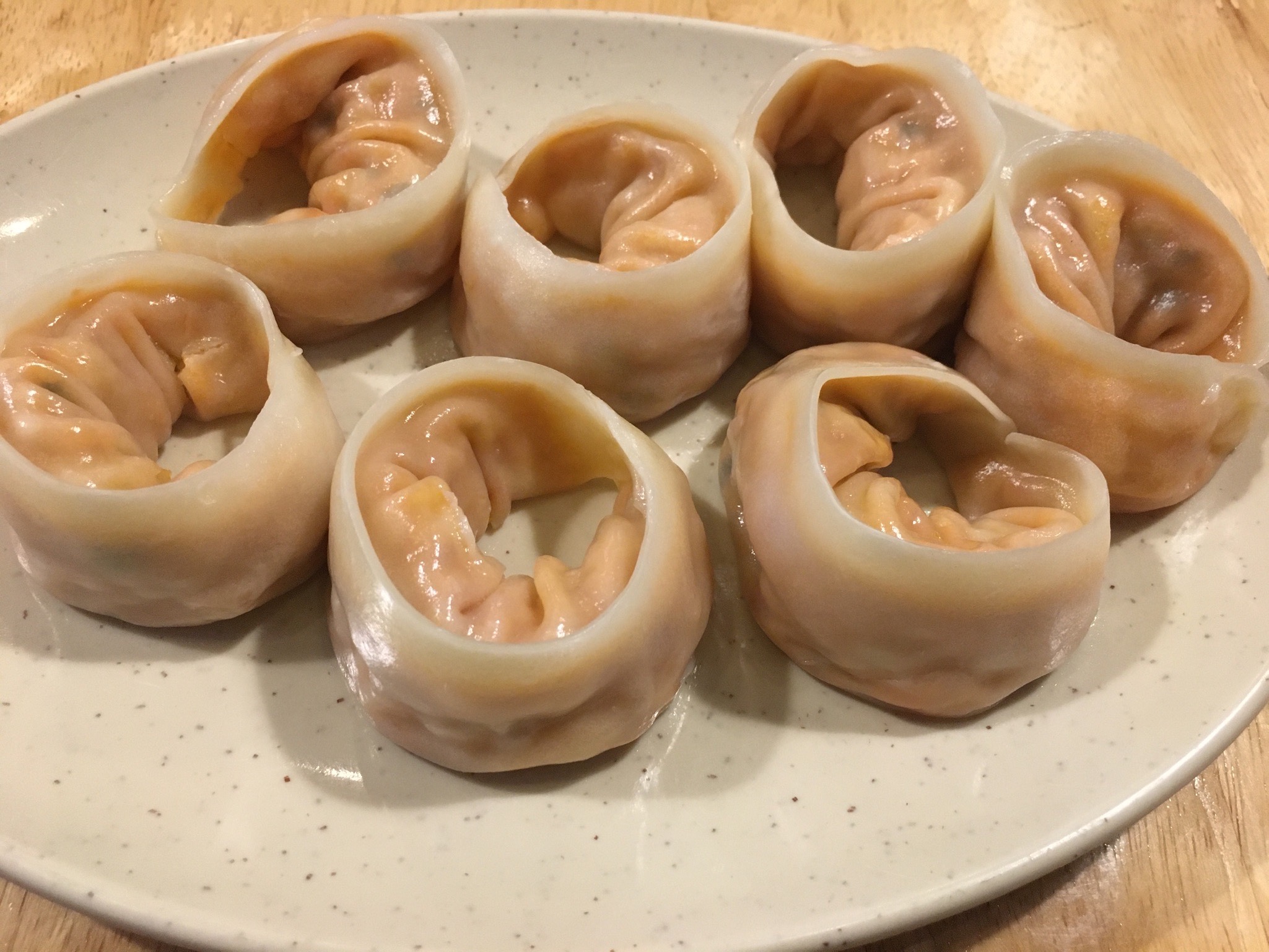
만두(mandu), Deep Fried Kimchi Dumpling,
South Korea 
Koran Kimchi is inside of deep fried drmplings, which is called "Mandu" in Korea.
They also wrap Korean glass noodles in the dough of dumplings.
In South Korea, white rice is regarded as a staple food. They eat everything with white rice, like Japanese people.
Spicy Kimchi is a specialty of Korean cuisine. They have many kinds of Kimchi and of course, they eat it with white rice.
The most remarkable thing about dumplings is that the way to wrap a pork in dough is different from the Chinese original one when they make dumplings.
In South Korea, since they make a round shape of dough when wrapping ground pork, Kimchi, and sometimes glass noodles, Mandu has sometimes a round shape.
Let's arrange the differences between the way of wrapping ground pork on the table below.
| country | Name of Dumpling | Way to wrap | What we wrap on dough |
|---|---|---|---|
| Chinese | jiǎo zi | fold symmetrically | ground pork and lamb roast, Cabbage, leek |
| South Korea | Mandu | round shape | Kimchi, glass noodle, ground pork and so on |
| Japan | Gyōza | make pleats in dough | garlic, ground pork, Cabbage, leek, a shiitake mushroom |
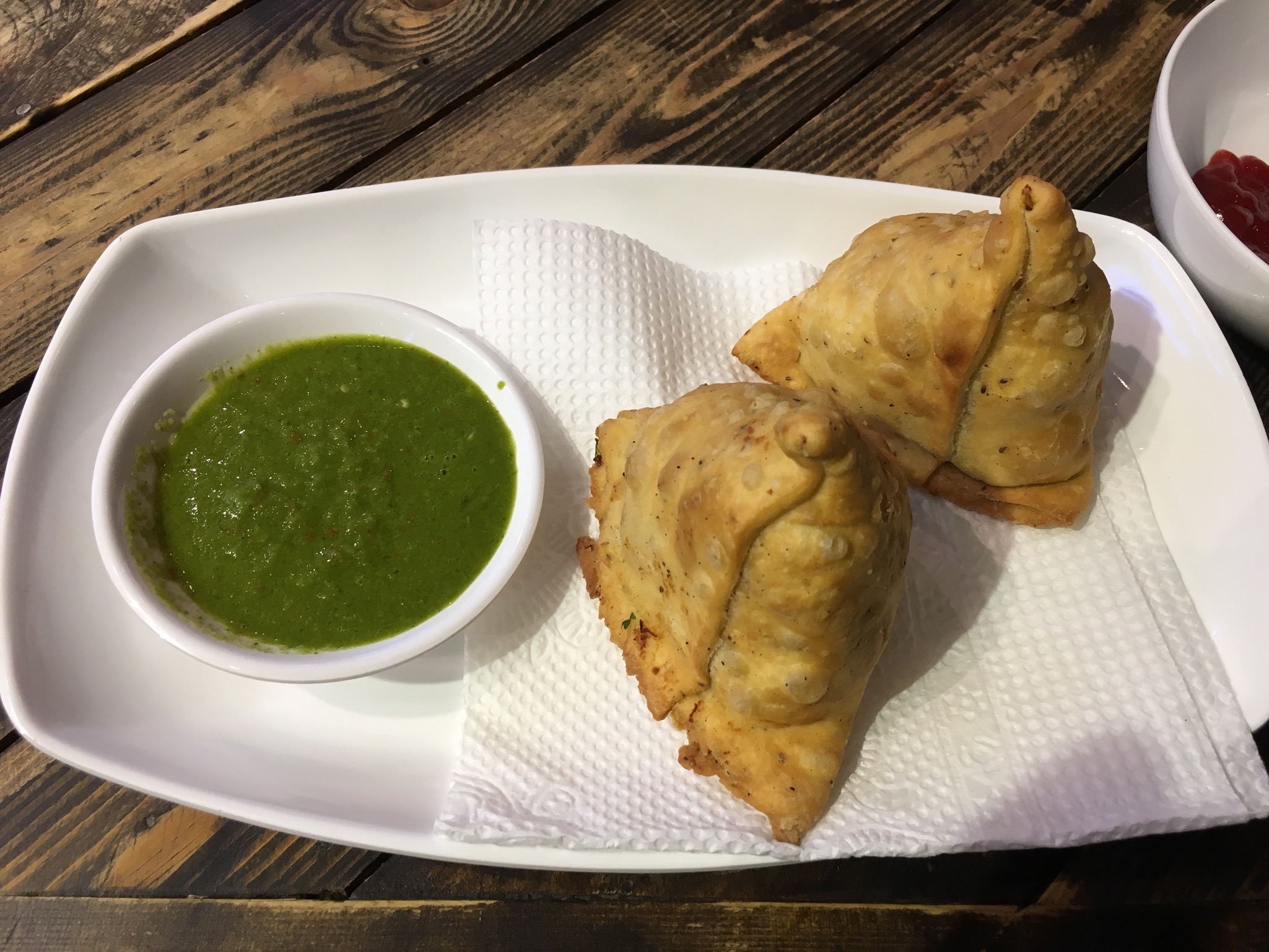
समोसा, سموسہ ,Samosa, India, Nepal 
In India, they wrap potatoes, vegetables, chicken in dough and fry it in oil. Samosas may take different forms, including triangular, cone. They dip it in green chili sauce like in the picture above when eating it.
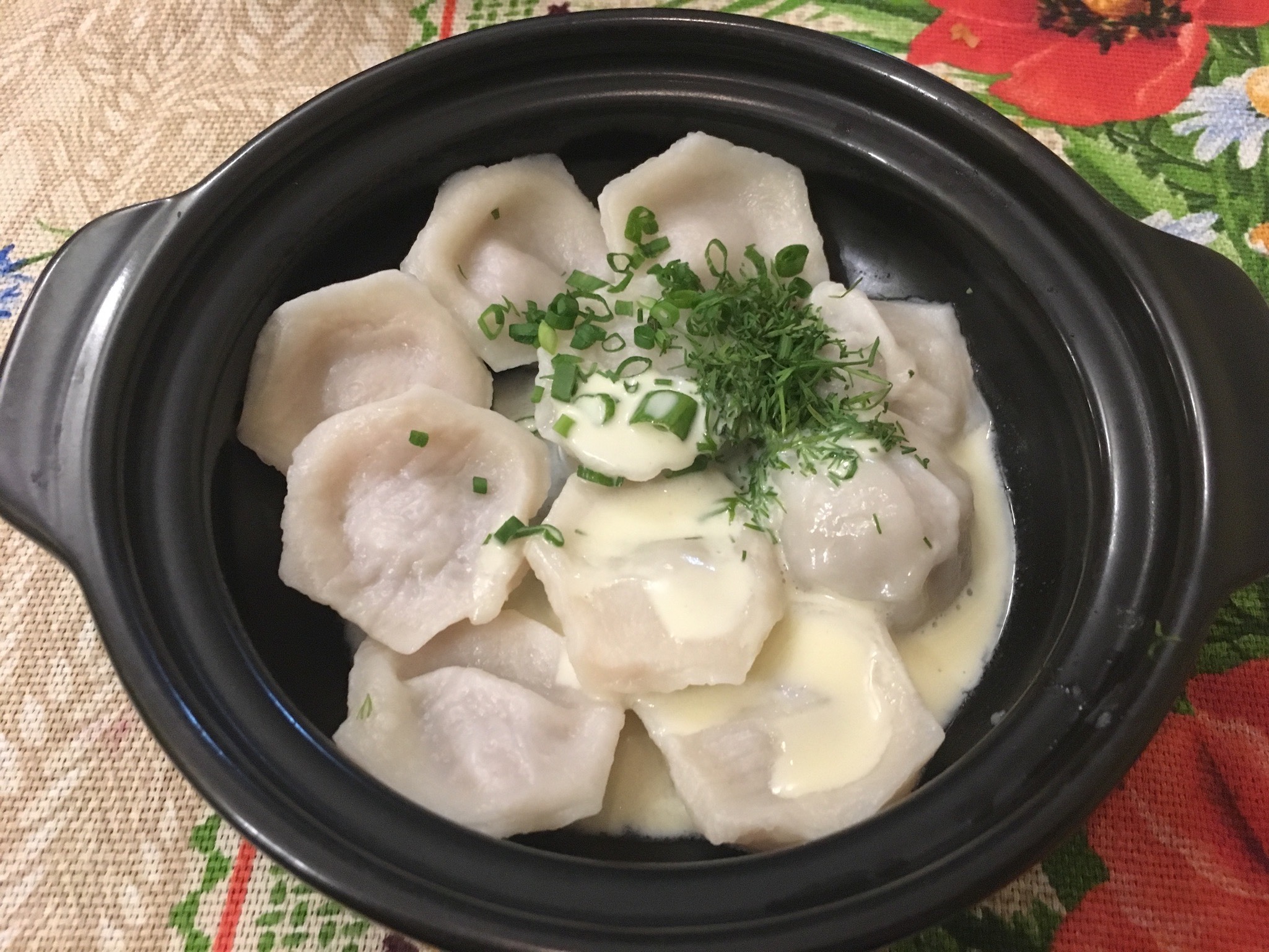
пельмени, Pelimeni, Russia 
For long time, all generations of Russians and former Soviet union have cooked themselves, this dish at home. Please dip it into the cheese sauce when you eat it. This is a Russian dumpling of minced pork or beef wrapped in thin pasta dough.
G:uǎngdōng Shěng(Canton)
is located on the Southern coast of the People's Republic of China.
Dim sum is a Cantonese cuisine style prepared as small size food in small steamer baskets.
They steam the dumplings and usually put them in small steamer baskets like the picture above.
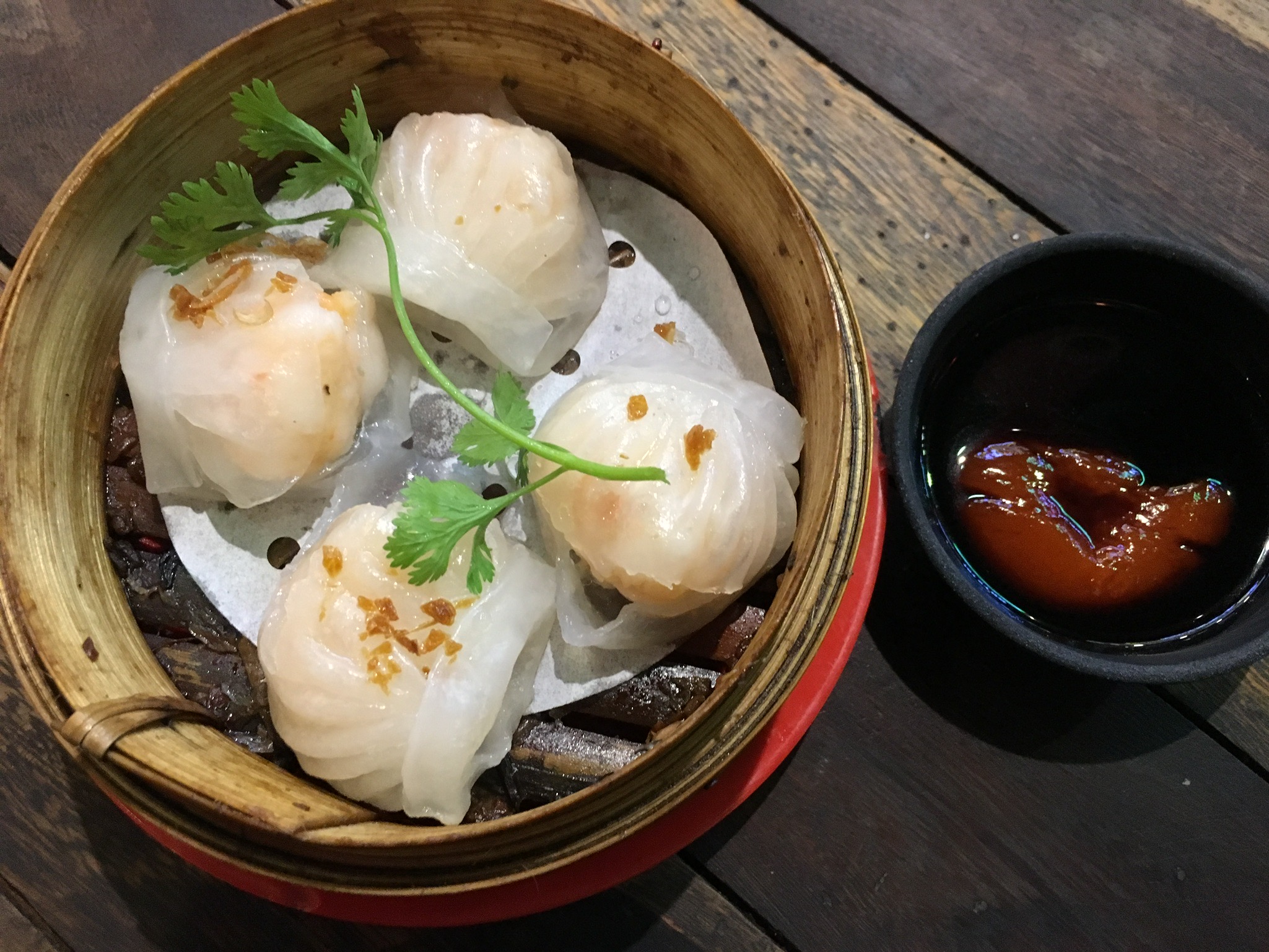
蝦餃(Xiā jiǎo) Shrimp steamed dumpling,
Canton(Guang Dong) 
Shrimp steamed dumpling in small steamer baskets is one of the Dim Sum and its wrapper (dough) is made of rice paper.
Dim sum is called Diǎn xīn(点心) in Chinese and actually dim sum comes from Cantonese direct pronunciation.
Diǎn xīn(点心) means light food that covers a wide range from cake to dumplings.
But dim sum often indicates food served in small steamer baskets such as Xiu Mai, shrimp dumplings, xiao long bao.
I've arranged the table about pronunciation.
| character | Cantonese | Mandarine | Japanese |
|---|---|---|---|
| 點心 点心 | dim sum | Diǎn xīn | ten shin |
| 小籠包 | siu2lung4baau1. | xiǎo lóng bāo | sho lon po |
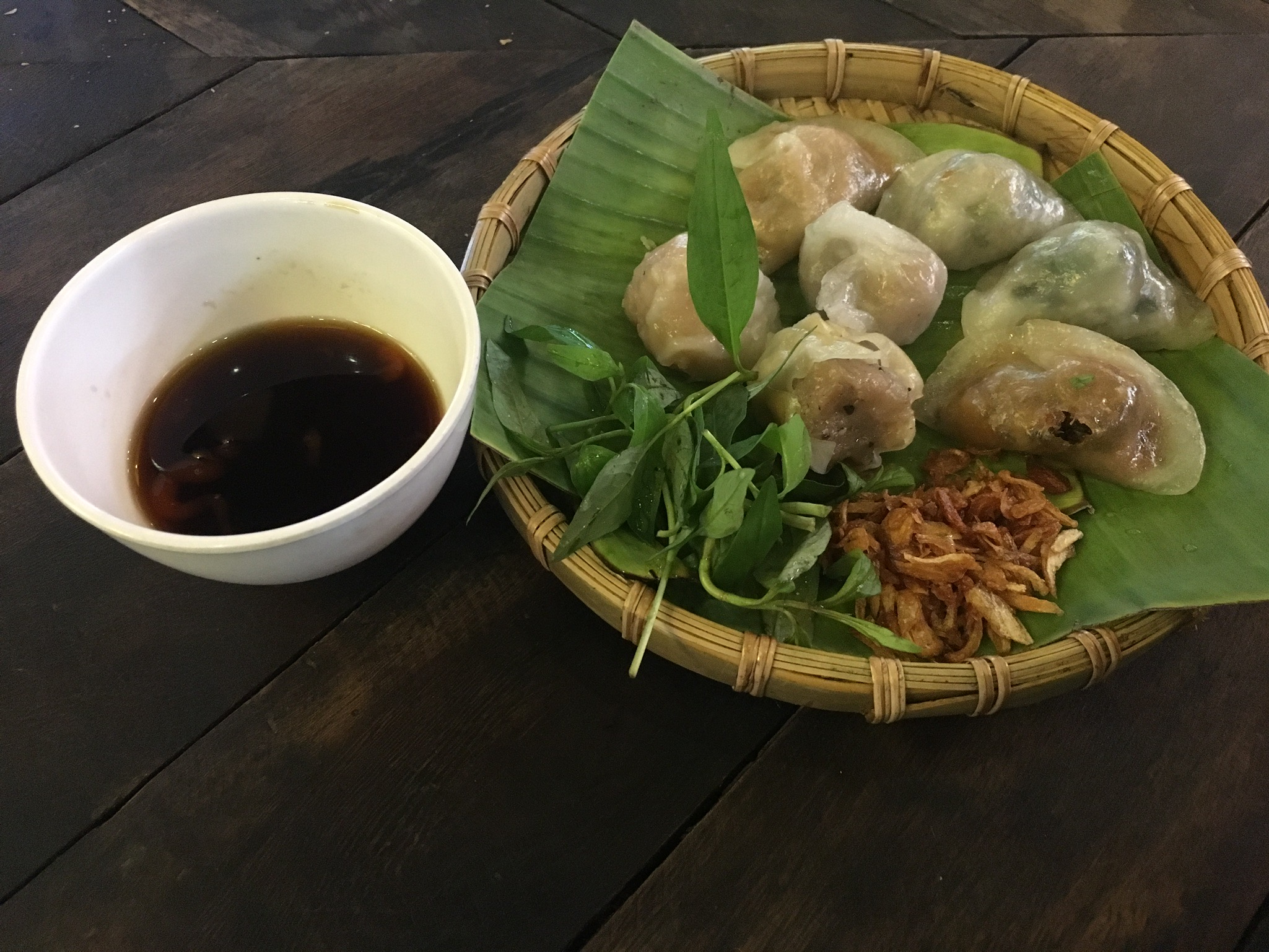
烧卖, Shāomài, Cantonese 
S hāomài is a one of Chinese dim sum, which steam minced pork meat wrapped by wheat flour dough. Dim sum often indicates food served in small steamer baskets. Shāomài is steamed pork dumpling but it's quite different from Vietnamese one.
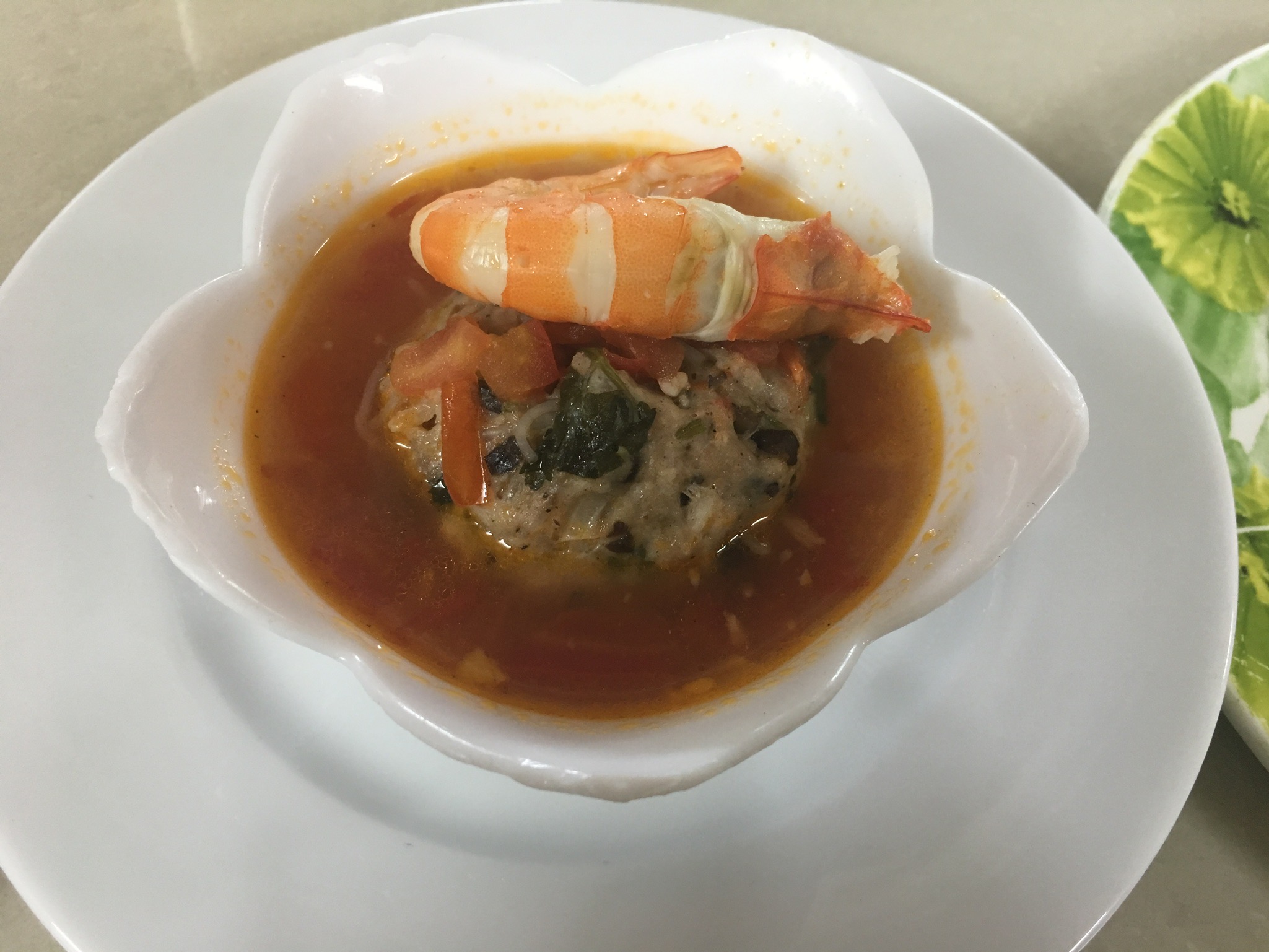
Xíu Mại, Vietnam 
S hāomài is steamed pork dumpling but it's quite different from Vietnamese one. In Vietnam, they don't wrap minced pork meat on wheat flour dough.
| Country | Character | Pronunciation |
|---|---|---|
| English | steamed pork dumpling | |
| Mandarine | 烧卖 | Shāomài |
| Vietenamese | Xíu Mại | |
| Korean | 슈마이 | syumai |
| Japanese | 焼売 | Shūmai |

Há cảo, Vietnamese steamed dumpling,
Vietnam 
This cuisine Há cảo as in the picture above comes from Cantonese dimsum. They wrap the pork in dough that is made of rice paper and steam it. Ha Cao is often sold in a street or other public place.
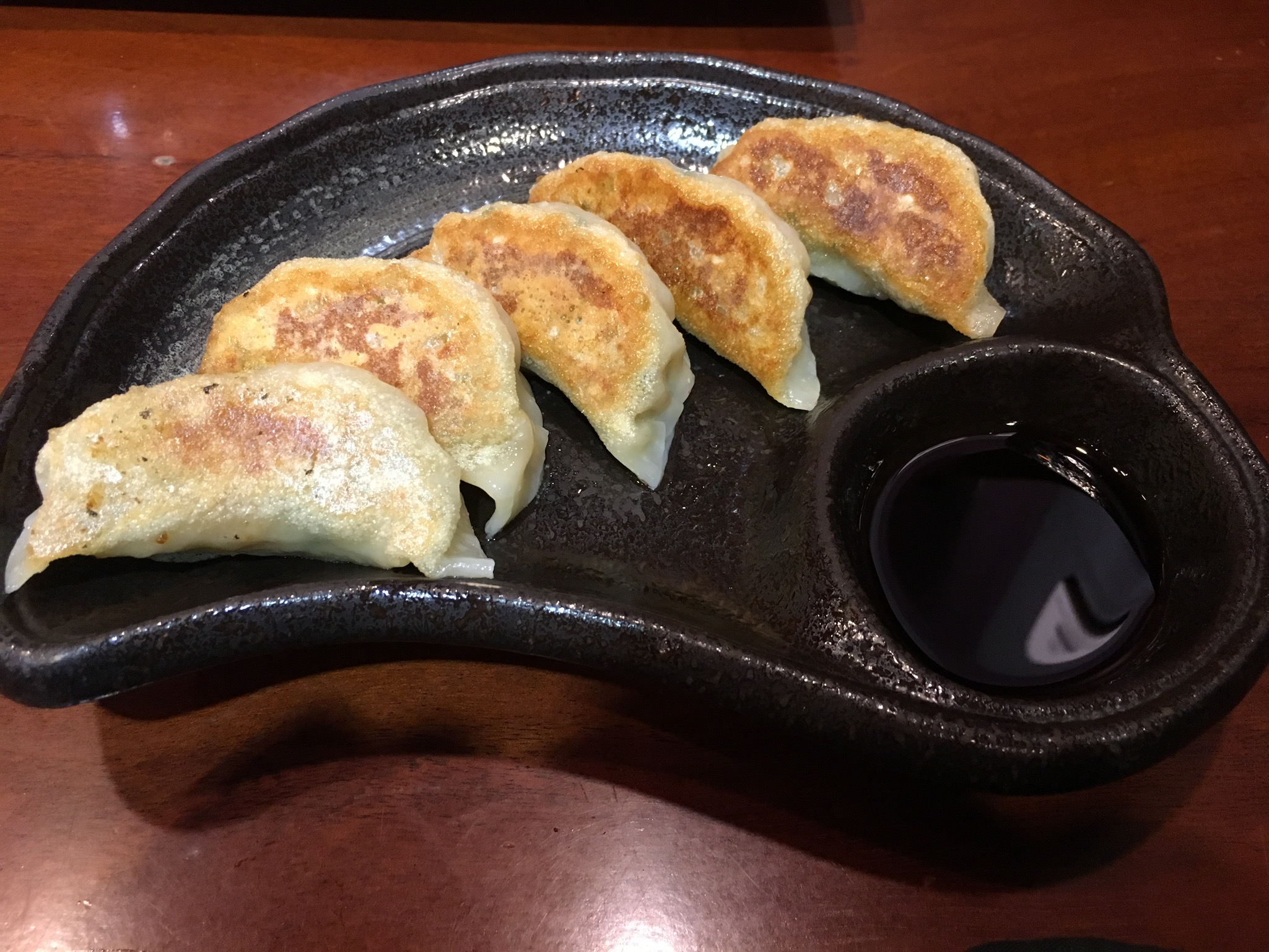
餃子(Gyōza), Grilled Dumplings with white rice,
Japan 
Let's think about Japanese dumplings next.
As shown in the above table, they grill dough to make dumplings which are called Gyōza. Gyōza, like picture above, is grilled more than Guo Tie.
We usually mix soy sauce with vinegar and chili oil to make the sauce for dumplings before eating it.
Utsunomiya city is famous for Gyōza. Please confirm this city on Google Maps. It is located in the Kanto region.
Since the main diet in Japan is rice, they have a custom to eat it with white rice after dipping dumplings in soy sauce.
The biggest difference between Western cuisine style and Asian style would be sharing side dishes.
In China, a rotating table which is called a Lazy Susan is a traditional table that lets everyone reach the food which is on it. But in Western style, each of us has a main dish and a side dish. In Japan, they also share side dishes which are on table, but each of them has white rice as a staple food. White rice is regarded as one of the side dishes in China; however, most Japanese restraunts usually serve us white rice as a staple food no matter what we order. Therefore, Japanese has a custom to eat dumplings with white rice together even though it might be weird for other Asian people.
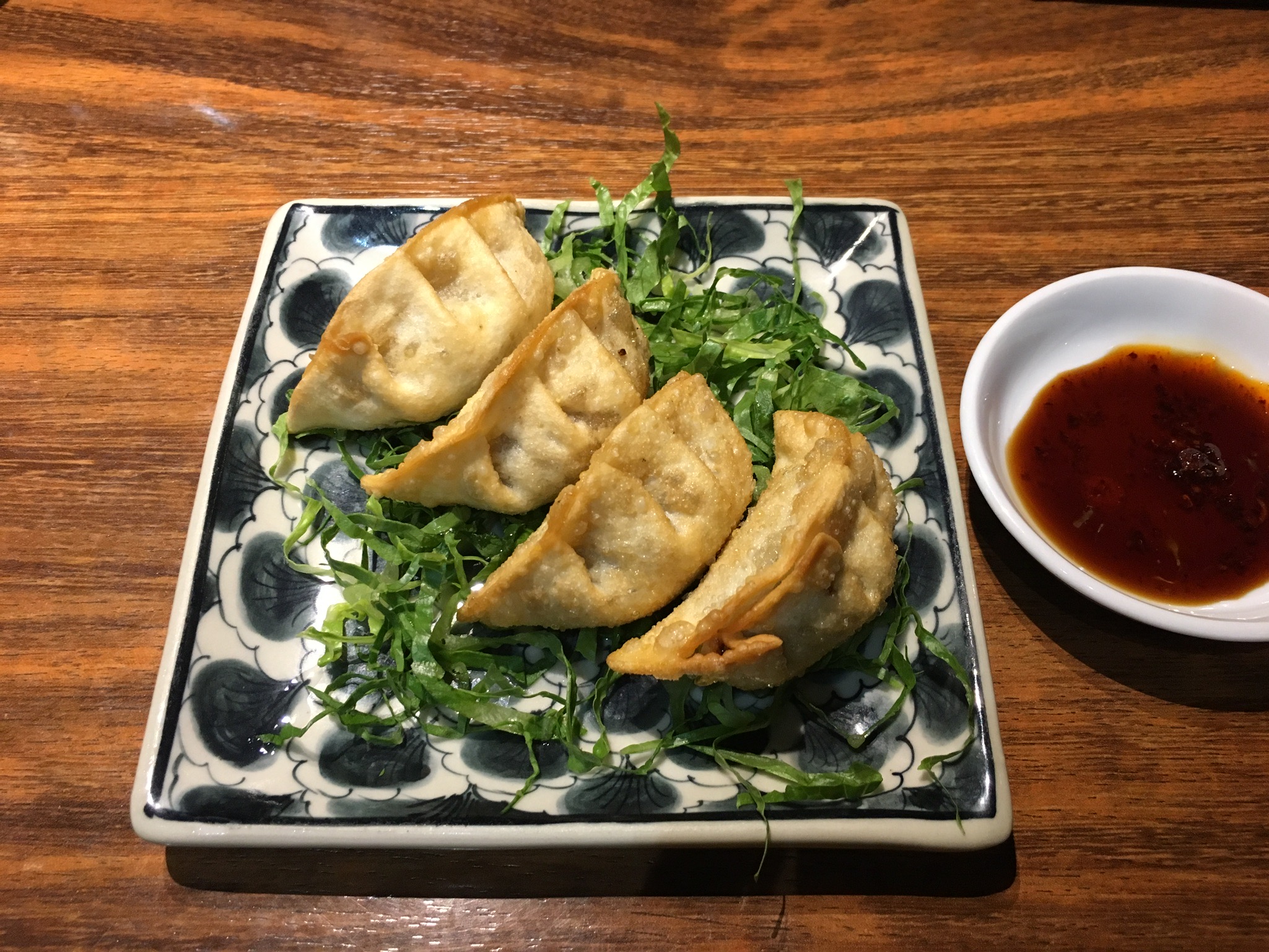
揚げ餃子(Age Gyōza) Japan,
炸饺子(Zhá jiǎo zi) Deep Fried dumplings, China


This picture on left side is a Deep Fried dumpling in a Japanese restaurant. In Chinese, a Deep Fried dumpling is called "Zhá jiǎo zi(炸饺子)." In Japanese, they call it "Age Gyōza." Please be careful not to confuse spring rolls with Deep Fried dumplings. The most remarkable thing about dumplings is that the way to wrap ground pork is different from the Chinese orinal one. In Chinese original style, the dough of the dumpling is folded symmetrically when wrapping the ground pork, however, in Japanese style they make pleats in the dough. Furthermore, in South Korea, they make a round shape of dough when wrapping ground pork, Kimchi, and sometimes glass noodles.